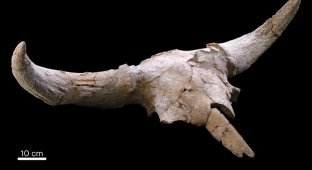Earliest image of a kiss found (3 photos)
Researchers at the University of Copenhagen claim that Humanity's earliest recorded kiss took place around 4500 years ago in the ancient Near East, in Mesopotamia, for 1000 years earlier than previously thought. 
According to scientists, kissing was practiced in the earliest Mesopotamian societies and may even have contributed to the spread herpes. In his article, published in the journal Science, The researchers stated that the findings suggest that kissing has been common in many cultures and did not originate in any specific region.
According to the researchers, this contradicts the previous theory. that the earliest evidence of human kissing on the lips was discovered in a certain region of South Asia 3500 years ago. 
Babylonian clay tablet depicting a nude and kissing couple lying in an embrace. 1800 BC
“In ancient Mesopotamia, this was the name given to early human cultures that existed between the Euphrates and Tigris rivers in the territory modern Iraq and Syria, people wrote in cuneiform on clay tablets. Thousands of these clay tablets have survived to this day, and they contain clear examples of the fact that in ancient times kisses were considered part of romantic intimacy, just as kissing could be part of friendships and family relationships,” says Dr. Troels Pank Arböll, Mesopotamian medical history specialist from Copenhagen university.
“Therefore, kissing should not be regarded as a custom, that arose exclusively in one region and spread from there, but rather as a custom practiced in many ancient cultures for several millennia,” he adds.
Behavioral studies of bonobos and chimpanzees are the closest now living relatives of a person - showed that they also kiss. By According to scientists, this suggests that the practice of kissing is fundamental human behavior, and explains why it can be found in different cultures. 
Researchers also believe that kissing is unintentional played a role in the transmission of viruses such as herpes simplex virus 1 (HSV-1).
According to Dr. Arböll, there is a significant corpus medical texts from Mesopotamia, some of which mention disease with symptoms resembling the herpes simplex virus. However it is necessary to take into account the fact that ancient medical texts could influence various cultural and religious concepts, so they cannot be take it completely on faith.
Nevertheless, the scientist believes, it is interesting to note some similarities between the disease known as bushanu in ancient medical texts from Mesopotamia, and symptoms caused by infections of the simple herpes:
Bushanu disease was localized mainly in the mouth and throat or around them, and symptoms included vesicles in or around the mouth, which is one of the dominant signs of herpes infection.
Recent studies have shown that modern viruses, transmitted through kissing, such as HSV-1, Epstein-Barr virus, causes glandular fever, and human parvovirus B19, which causes bright red rash on the cheeks of children existed in ancient times.
Here is what Dr. Sophie Lund Rasmussen from the University of Oxford says:
If the practice of kissing was widespread and well established itself in a number of ancient societies, the consequences of kisses with in terms of pathogen transmission were probably more or less permanent.
Both researchers concluded that future results ancient DNA research will benefit from an interdisciplinary approach, since they will inevitably lead to discussions about complex historical events and social interactions. And one example is kissing like driving force for disease transmission.























